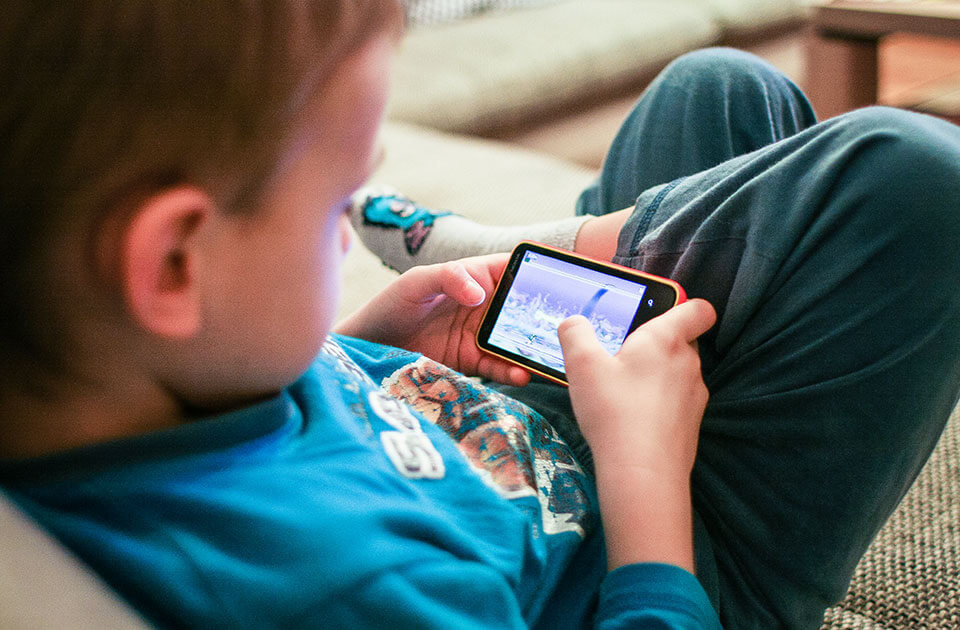The Impact of Smartphones on Children: What Parents Need to Know
The Impact of Smartphones on Children: What Parents Need to Know
Introduction
Smartphones have become an integral part of modern life, providing countless benefits in communication, education, and entertainment. However, when it comes to children, excessive smartphone use can have both positive and negative effects. As a parent, understanding these impacts is key to helping your child develop healthy smartphone habits. In this blog, we’ll explore how smartphones affect children’s development, the risks of overuse, and practical tips to ensure a balanced approach to technology.
1. Positive Impacts of Smartphones on Children
When used responsibly, smartphones can offer several benefits for children:
A. Educational Benefits
- Access to Learning Resources:
- Smartphones provide access to educational apps, e-books, and online classes.
- Interactive tools can enhance problem-solving, creativity, and language skills.
- Global Connectivity:
- Children can explore diverse cultures, ideas, and information through the internet.
B. Communication Skills
- Staying Connected:
- Smartphones allow kids to maintain relationships with family and friends, even from a distance.
- Collaboration Tools:
- Group chats and video calls help children develop teamwork and communication skills.
C. Safety and Convenience
- Emergency Contact:
- Smartphones enable children to quickly contact parents or guardians in case of emergencies.
- Location Tracking:
- GPS tracking apps give parents peace of mind by knowing their child’s location.
2. Negative Impacts of Smartphones on Children
While smartphones can be useful, excessive or improper use can lead to various challenges:
A. Physical Health Issues
- Eye Strain:
- Prolonged screen time can cause digital eye strain, leading to discomfort, dry eyes, and blurred vision.
- Poor Posture:
- Constantly looking down at a phone can lead to neck pain and poor posture.
- Reduced Physical Activity:
- Spending too much time on smartphones may reduce outdoor play and exercise, contributing to obesity.
B. Mental Health Concerns
- Addiction:
- Games, social media, and notifications can make smartphones highly addictive for kids.
- Anxiety and Depression:
- Exposure to negative content or cyberbullying can lead to anxiety, stress, and depression.
- Sleep Disruption:
- Blue light from screens interferes with melatonin production, leading to poor sleep quality.
C. Cognitive and Behavioral Effects
- Shortened Attention Span:
- Constant multitasking on devices may hinder concentration and focus.
- Delayed Social Development:
- Overuse of smartphones can reduce face-to-face interactions, affecting social and emotional skills.
D. Exposure to Inappropriate Content
- Unfiltered Internet Access:
- Without proper monitoring, children may encounter violent, explicit, or harmful content.
- Cyberbullying and Online Predators:
- Kids are vulnerable to online threats without parental guidance.
3. Tips for Parents to Manage Smartphone Use
Balancing the pros and cons of smartphones involves setting boundaries and encouraging responsible use:
A. Set Clear Rules
- Define specific times and places for smartphone use (e.g., no phones during meals or bedtime).
- Limit screen time based on your child’s age (e.g., 1–2 hours for children over 5 years old).
B. Monitor and Filter Content
- Use parental controls to block inappropriate websites and apps.
- Regularly review your child’s online activity and discuss what they’re viewing.
C. Encourage Offline Activities
- Promote hobbies like sports, arts, and reading to reduce reliance on screens.
- Schedule family activities that don’t involve technology, such as hiking or board games.
D. Lead by Example
- Model healthy smartphone habits by limiting your own screen time.
- Show the importance of face-to-face communication by engaging with your child.
E. Teach Online Safety
- Educate your child about the importance of privacy and not sharing personal information online.
- Discuss the risks of cyberbullying and how to report inappropriate behavior.
4. Age-Appropriate Smartphone Guidelines
To ensure safe and healthy smartphone use, tailor guidelines based on your child’s age:
A. Ages 3–5
- Minimal screen time (no more than 1 hour daily).
- Focus on high-quality, educational content.
B. Ages 6–12
- Supervised use with time limits (1–2 hours daily).
- Encourage balance between digital and non-digital activities.
C. Ages 13–18
- Teach self-regulation and responsibility.
- Monitor social media usage and discuss potential risks.
5. Signs of Smartphone Overuse in Children
Watch for these signs that your child may be spending too much time on their smartphone:
- Increased irritability or frustration when the phone is unavailable.
- Difficulty focusing on tasks or schoolwork.
- Withdrawal from family activities or face-to-face interactions.
- Disrupted sleep patterns or excessive fatigue.
6. Conclusion
Smartphones are a powerful tool that can benefit children when used responsibly, but they also come with risks that require careful management. By understanding the potential impacts of smartphone use and taking proactive steps, parents can help their children develop healthy digital habits. Remember, it’s all about balance—ensuring that technology enhances your child’s life rather than dominating it.
Call to Action
How do you manage your child’s smartphone use? Share your tips or concerns in the comments below! For more parenting advice and tech safety tips, follow this blog.







Comments